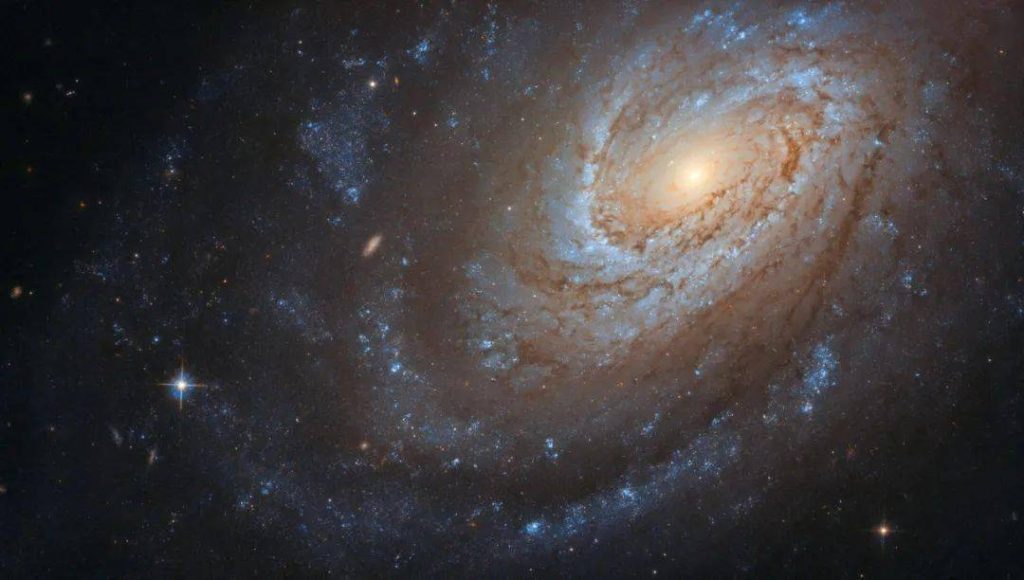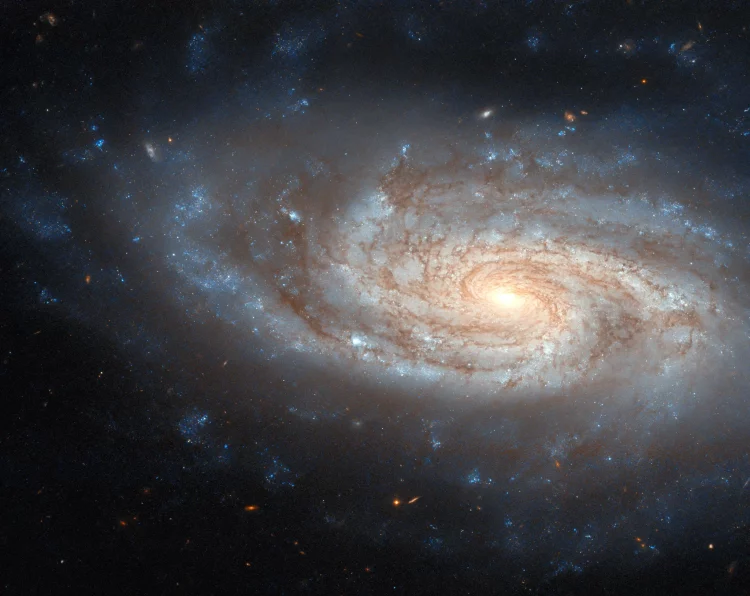Introduction
In a significant move that underscores NASA’s commitment to advancing astrophysics, the space agency has selected five new Roman Technology Fellows. This prestigious fellowship program is designed to support and nurture the next generation of scientists and engineers who will contribute to the development of cutting-edge technologies for the Nancy Grace Roman Space Telescope (Roman Space Telescope). This article explores the details of the new fellows, their groundbreaking research, the importance of the Roman Space Telescope, and the broader implications for the field of astrophysics.
Background on the Roman Technology Fellows Program
The Roman Technology Fellows Program is an initiative aimed at fostering innovation and research excellence in the field of astrophysics. Named after the Nancy Grace Roman Space Telescope, this program supports early-career scientists and engineers who are working on advanced technologies that will be critical for the telescope’s operations and scientific missions.
The fellowship is named in honor of Dr. Nancy Grace Roman, a pioneering astrophysicist who played a crucial role in the development of the Hubble Space Telescope. Dr. Roman’s contributions to space science and her advocacy for space exploration have left a lasting legacy, making the fellowship program a fitting tribute to her impact on the field.
Overview of the Nancy Grace Roman Space Telescope
The Nancy Grace Roman Space Telescope, set to launch in the mid-2020s, represents a significant advancement in space-based observational capabilities. Named after Dr. Roman, the telescope is designed to address some of the most fundamental questions in astrophysics, including the nature of dark energy, the formation and evolution of galaxies, and the search for exoplanets.
The Roman Space Telescope will be equipped with a wide-field infrared survey capability, allowing it to capture detailed images of the universe in unprecedented detail. Its scientific goals include mapping the distribution of dark energy, studying the formation of galaxies, and surveying exoplanets in nearby star systems.
One of the key features of the telescope is its large field of view, which will enable it to observe vast areas of the sky with high precision. This capability will provide valuable data for understanding the universe’s expansion and the role of dark energy in shaping its evolution.
Profiles of the New Roman Technology Fellows
NASA’s selection of five new Roman Technology Fellows marks a crucial step in preparing for the Roman Space Telescope’s upcoming mission. Each fellow brings a unique set of skills and research interests that will contribute to the telescope’s technological advancements. Here is a detailed look at the five new fellows:
1. Dr. Emily Thompson
Dr. Emily Thompson, a postdoctoral researcher at the California Institute of Technology (Caltech), has been awarded the Roman Technology Fellowship for her work on advanced detector technologies. Her research focuses on developing high-efficiency infrared detectors that will enhance the sensitivity and resolution of the Roman Space Telescope’s instruments.
Thompson’s work involves designing and testing new types of detectors that can operate at extremely low temperatures, which is essential for capturing faint infrared signals from distant galaxies and exoplanets. Her innovative approach aims to improve the telescope’s ability to detect and characterize celestial objects with greater precision.
In an interview, Dr. Thompson expressed her excitement about the fellowship, stating, “Receiving the Roman Technology Fellowship is an incredible honor. It provides me with the resources and support needed to push the boundaries of detector technology and contribute to the success of the Roman Space Telescope. I look forward to the opportunity to make a significant impact on our understanding of the universe.”
2. Dr. Alejandro Garcia
Dr. Alejandro Garcia, an assistant professor at the University of Arizona, is known for his expertise in astrophysical instrumentation and data analysis. His research focuses on developing advanced imaging systems and algorithms that will be used to process the massive amounts of data generated by the Roman Space Telescope.
Garcia’s work involves creating sophisticated software tools that can analyze and interpret complex astronomical data, enabling scientists to extract valuable information from the telescope’s observations. His contributions are crucial for ensuring that the data collected by the telescope is accurate and scientifically meaningful.
Garcia commented on his selection, saying, “The Roman Technology Fellowship is an exciting opportunity to advance the field of astrophysical instrumentation and data analysis. I am eager to collaborate with other researchers and contribute to the development of technologies that will drive the success of the Roman Space Telescope.”
3. Dr. Maria Patel
Dr. Maria Patel, a research scientist at the Space Telescope Science Institute (STScI), has been recognized for her work on optical systems and telescope design. Her research focuses on improving the optical performance of space-based telescopes, including the Roman Space Telescope, to enhance their imaging capabilities.
Patel’s work involves designing and testing optical components that will ensure the telescope’s instruments can capture high-resolution images of distant galaxies and star systems. Her expertise in optical engineering is essential for achieving the telescope’s scientific objectives and ensuring its successful operation.
Dr. Patel shared her thoughts on the fellowship, stating, “I am thrilled to be selected as a Roman Technology Fellow. This fellowship provides a unique opportunity to advance optical technologies and contribute to the success of the Roman Space Telescope. I look forward to working on innovative solutions that will enhance the telescope’s imaging capabilities.”
4. Dr. James Lee
Dr. James Lee, a physicist at the Massachusetts Institute of Technology (MIT), has been awarded the fellowship for his work on data calibration and processing techniques. His research focuses on developing methods to calibrate and correct the data collected by the Roman Space Telescope, ensuring its accuracy and reliability.
Lee’s work involves creating algorithms and software tools that can correct for various sources of error in the telescope’s data, such as instrumental noise and observational biases. His contributions are vital for producing high-quality data that will enable scientists to make accurate measurements and discoveries.
Dr. Lee expressed his enthusiasm for the fellowship, saying, “The Roman Technology Fellowship provides a fantastic opportunity to work on cutting-edge data calibration techniques. I am excited to contribute to the success of the Roman Space Telescope and help ensure that its data is precise and reliable.”
5. Dr. Sophie Nguyen
Dr. Sophie Nguyen, a computational astrophysicist at the University of Texas at Austin, has been recognized for her work on simulation and modeling of astronomical phenomena. Her research focuses on using computer simulations to model the behavior of galaxies and dark matter, providing valuable insights for interpreting data from the Roman Space Telescope.
Nguyen’s work involves developing advanced simulation tools that can model the complex interactions between galaxies, dark matter, and other cosmic components. Her research will help scientists understand the data collected by the telescope and address fundamental questions about the universe’s structure and evolution.
Dr. Nguyen commented on her selection, stating, “Being chosen as a Roman Technology Fellow is an incredible honor. I am excited to apply my expertise in computational astrophysics to support the Roman Space Telescope’s mission and contribute to our understanding of the cosmos.”

The Significance of the Roman Space Telescope
The Nancy Grace Roman Space Telescope represents a major leap forward in the field of astrophysics. Its advanced capabilities will enable scientists to explore the universe in new and unprecedented ways. The telescope’s wide-field infrared survey capability will provide detailed images of the sky, allowing researchers to study the distribution of dark energy, the formation of galaxies, and the search for exoplanets.
One of the key scientific goals of the Roman Space Telescope is to map the distribution of dark energy, a mysterious force that is driving the accelerated expansion of the universe. By analyzing the distribution and behavior of dark energy, scientists hope to gain a deeper understanding of its nature and its impact on the universe’s evolution.
Another important goal is to study the formation and evolution of galaxies. The telescope’s wide-field imaging capability will allow scientists to observe distant galaxies and investigate their structure, composition, and growth over cosmic time. This research will provide valuable insights into the processes that shape galaxies and their role in the broader universe.
The Roman Space Telescope will also play a crucial role in the search for exoplanets. By surveying nearby star systems, the telescope will identify and characterize exoplanets, including those that may have conditions suitable for life. This research will advance our knowledge of planetary systems and the potential for habitable environments beyond our solar system.
Impact on the Field of Astrophysics
The selection of the new Roman Technology Fellows and the development of the Roman Space Telescope represent significant advancements in the field of astrophysics. The fellows’ research and contributions will play a critical role in ensuring the success of the telescope’s mission and advancing our understanding of the universe.
The Roman Technology Fellows Program not only supports individual researchers but also fosters collaboration and innovation within the scientific community. By bringing together experts from diverse fields, the program encourages the development of new technologies and approaches that will drive the future of astrophysics.
The Roman Space Telescope’s findings will have far-reaching implications for our understanding of the cosmos. The data collected by the telescope will inform theories about dark energy, galaxy formation, and planetary systems, leading to new discoveries and insights. The research conducted by the Roman Technology Fellows will help ensure that these discoveries are based on accurate and reliable data.
Future Outlook and Developments
Looking ahead, the Roman Space Telescope is expected to make groundbreaking discoveries and advance our understanding of the universe. The continued development and refinement of technologies, such as those being worked on by the Roman Technology Fellows, will be crucial for achieving the telescope’s scientific objectives.
As the telescope nears its launch date, additional research and testing will be conducted to ensure its readiness for operation. The collaborative efforts of the Roman Technology Fellows, along with the broader scientific community, will play a vital role in preparing the telescope for its mission.


















































Discussion about this post